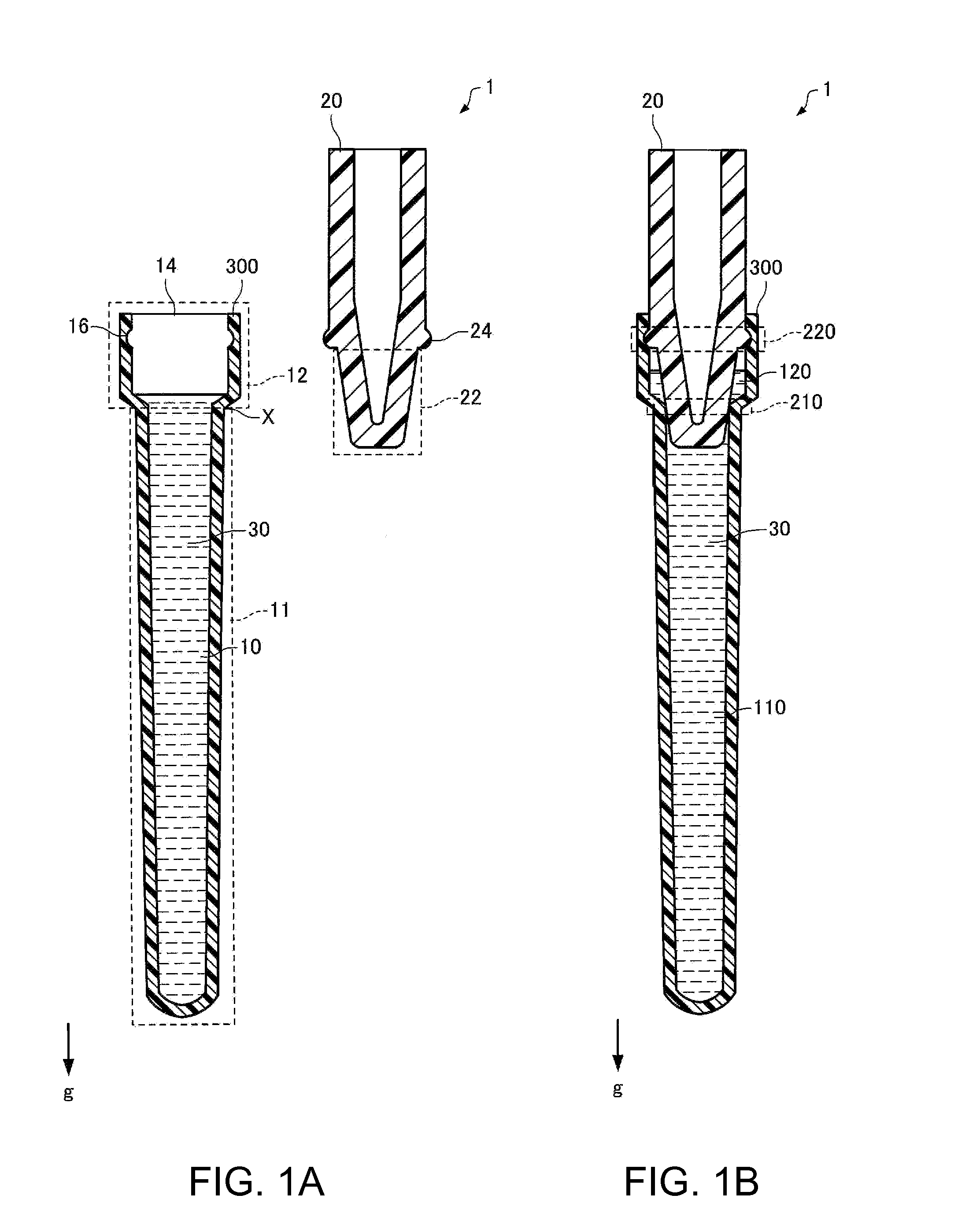Reaction vessel
a technology of reaction vessel and temperature control, which is applied in the direction of fluid controller, chemistry apparatus and processes, laboratory glassware, etc., can solve the problems of difficult complicated work necessary for causing the reaction, and the inability to control the temperature of the reaction vessel, so as to prevent the entry of bubbles into the first chamber of the reaction vessel
- Summary
- Abstract
- Description
- Claims
- Application Information
AI Technical Summary
Benefits of technology
Problems solved by technology
Method used
Image
Examples
first embodiment
1. Reaction Vessel of First Embodiment
[0029]FIGS. 1A and 1B schematically illustrate a cross-sectional structure of a reaction vessel 1 according to a first embodiment. FIG. 1A shows a condition of the reaction vessel 1 whose cover 20 is removed from a vessel main body 300, while FIG. 1B shows a condition of the reaction vessel 1 whose cover 20 is attached to the vessel main body 300. FIG. 2 schematically illustrates a condition of the reaction vessel 1 into which a second liquid 40 is introduced. In each of FIGS. 1A, 1B, and 2, an arrow g indicates the direction of gravity.
[0030]The reaction vessel 1 according to the first embodiment includes a vessel chamber 10 having an opening 14, a first area 11, and a second area 12 to which the opening 14 is positioned closer than to the first area 11, a cover 20 which seals at least a part of the first area 11 to define a first chamber 110 and also seals at least a part of the second area 12 to define a second chamber 120, and a first liquid...
second embodiment
2. Reaction Vessel of Second Embodiment
[0052]FIGS. 3A and 3B schematically illustrate a cross-sectional structure of a reaction vessel 2 according to a second embodiment. FIG. 3A shows a condition of the reaction vessel 2 whose cover 20a is removed from a vessel main body 300a, while FIG. 3B shows a condition of the reaction vessel 2 whose cover 20a is attached to the vessel main body 300a. FIG. 4 schematically illustrates a condition of the reaction vessel 2 into which the second liquid 40 is introduced. In each of FIGS. 3A, 3B and 4, the arrow g indicates the direction of gravity. In this section, structures different from the corresponding structures of the reaction vessel 1 in the first embodiment are chiefly discussed. The components and parts in this embodiment corresponding to the components and parts of the reaction vessel 1 in the first embodiment have been given similar reference numbers, and the same detailed explanation is not repeated.
[0053]The reaction vessel 2 in the ...
PUM
 Login to View More
Login to View More Abstract
Description
Claims
Application Information
 Login to View More
Login to View More - R&D
- Intellectual Property
- Life Sciences
- Materials
- Tech Scout
- Unparalleled Data Quality
- Higher Quality Content
- 60% Fewer Hallucinations
Browse by: Latest US Patents, China's latest patents, Technical Efficacy Thesaurus, Application Domain, Technology Topic, Popular Technical Reports.
© 2025 PatSnap. All rights reserved.Legal|Privacy policy|Modern Slavery Act Transparency Statement|Sitemap|About US| Contact US: help@patsnap.com



